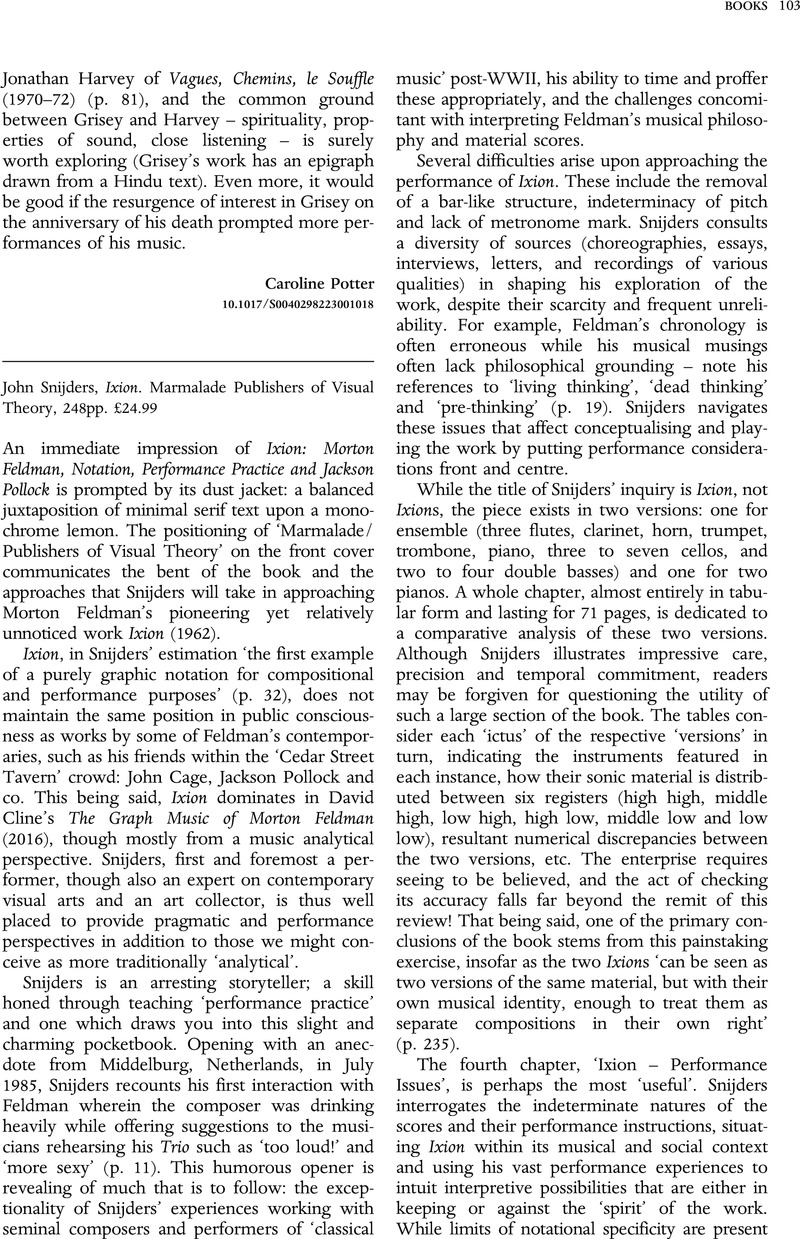No CrossRef data available.
John Snijders, Ixion. Marmalade Publishers of Visual Theory, 248pp. £24.99
Review products
John Snijders, Ixion. Marmalade Publishers of Visual Theory, 248pp. £24.99
Published online by Cambridge University Press: 01 April 2024
Abstract
An abstract is not available for this content so a preview has been provided. Please use the Get access link above for information on how to access this content.

Information
- Type
- BOOKS
- Information
- Copyright
- Copyright © The Author(s), 2024. Published by Cambridge University Press


